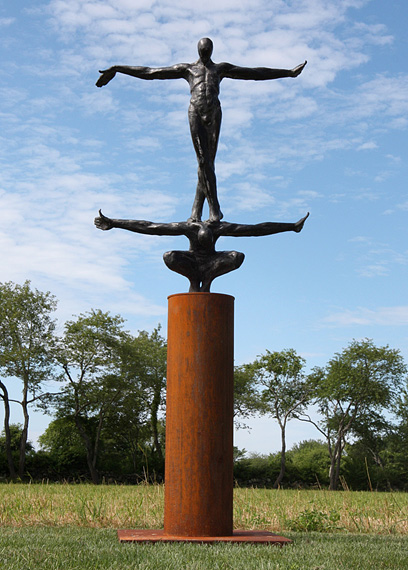Walter Horak, contemporary figurative sculpture

Any contemporary artist working in the figurative tradition has a least two challenging questions to answer. One is, Who are your antecedents? The other is, What have you got to add to a tradition that is several millennia old?
As to the first question, three main elements in my work have three corresponding sources. In terms of overall balanced design and relatively accurate proportion, ancient Western sculpture, as far back as the Greeks, is a first key source. I might add Michelangelo here as well. The feeling of immediacy in my sculpture and an active surface quality are a second hallmark, and the more recent source for that derives from the works of Degas, Rodin, and German expressionists like Barlach and Kollwitz. Movement and the orchestration of multiple figures in space define a third element, and these have the third and quite contemporary reference point: modern dance and related forms of physical/psychological expression.
The second imperative for the figurative artist – to say something meaningful or original – is infinitely more difficult (in fact many contemporary artists who embrace entirely new forms for the sake of being new often have a lesser aesthetic challenge than someone still engaged with the figure.) Here Ill quote the art critic Donald Kuspit who described sculpture as metaphor-making in three dimensions. Because for me the human form remains a powerfully familiar and direct instrument of expression, I use it comparatively in order to extend my sense of the world or at least to make imaginative connections between disparate things. So, for instance, in one previous series of sculptures, figures were organized in space as if they were elements of architecture and claimed titles like Buttress, Tower, and Cantilever.
My humble intention then is to make new metaphors, with the human figure a key component. I suspect the work should look at once old and new. On one hand, it has a familiar authority simply because the figure is present. On the other hand, the choreography of figures has an implied and compelling metaphor that should present something of a new challenge for a viewer.
Walter Horak
Mar 21, 2011
